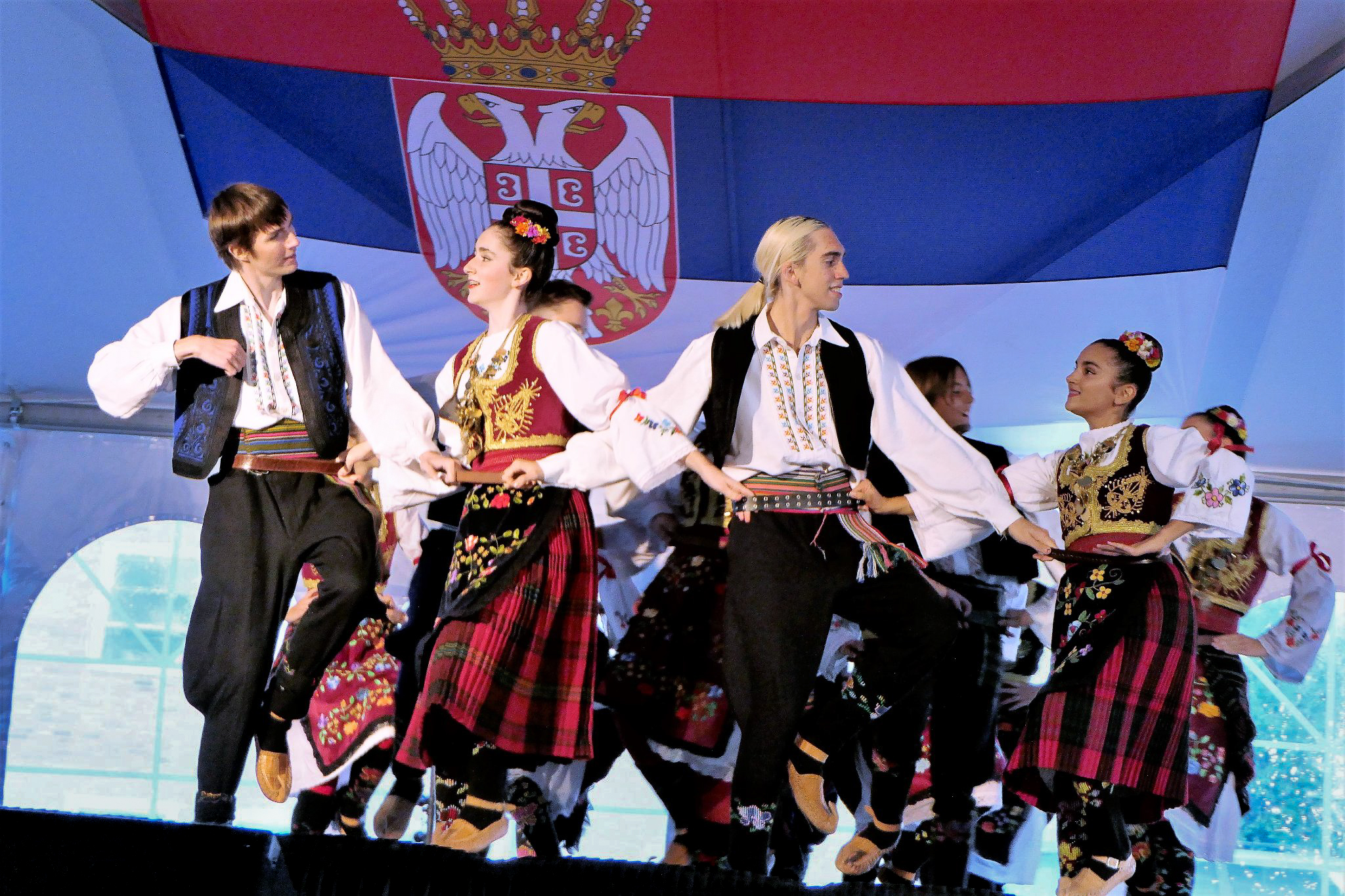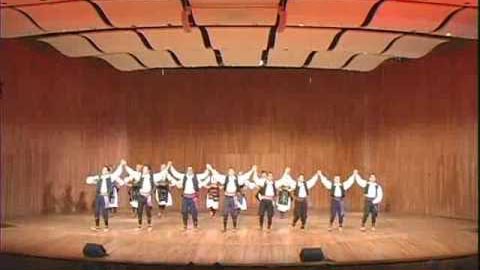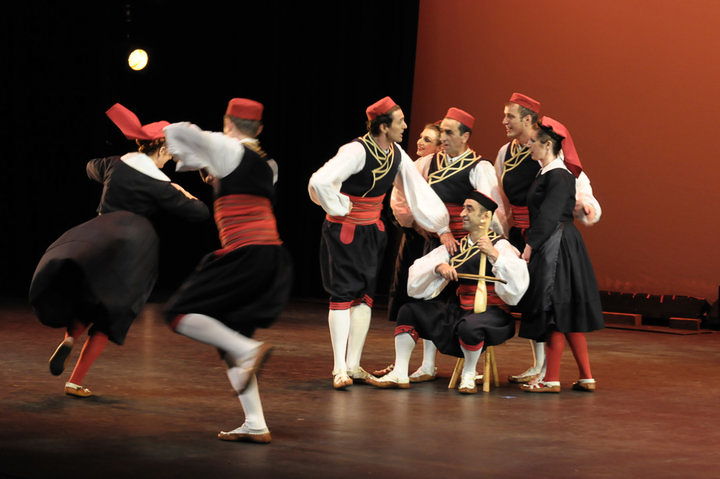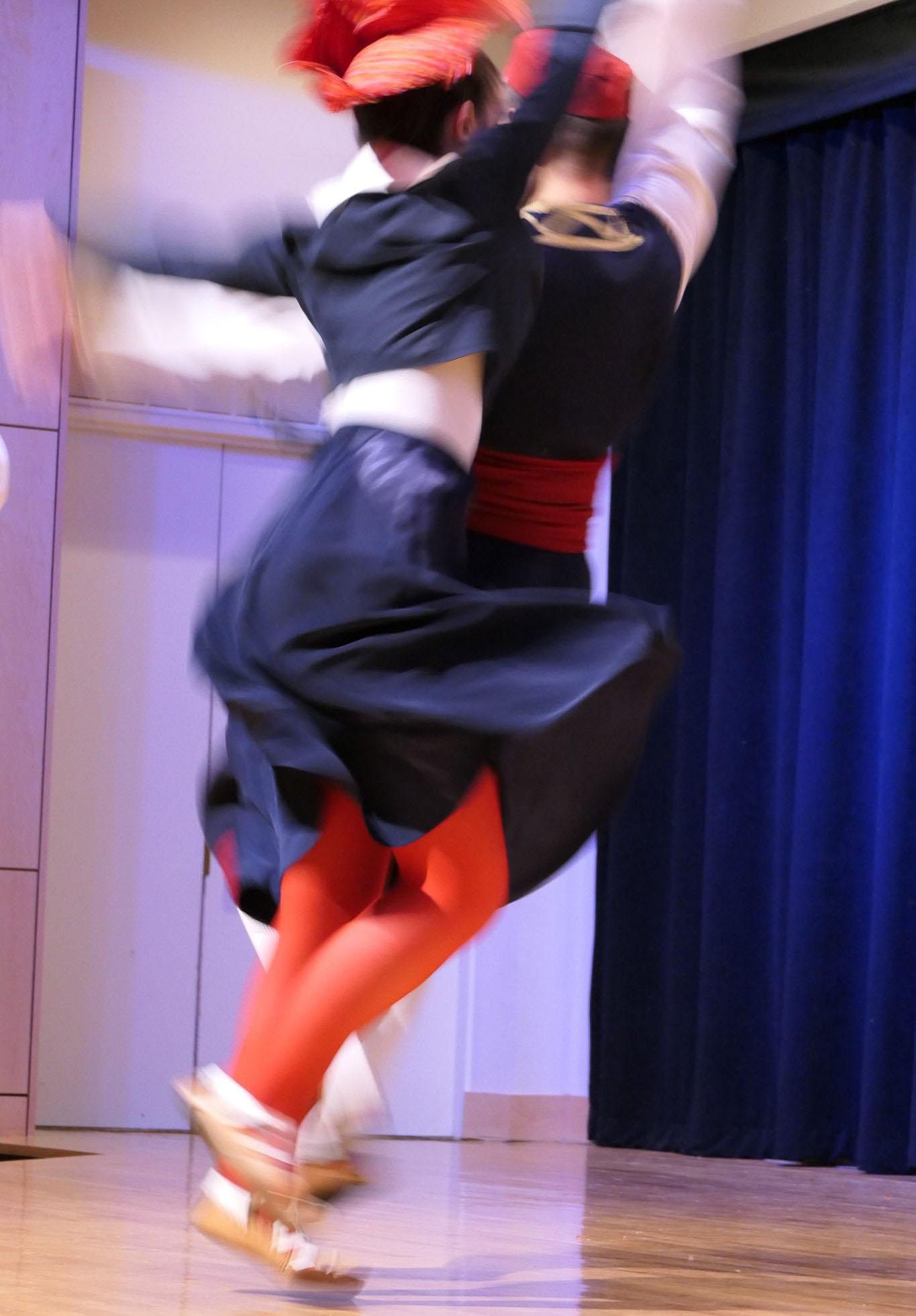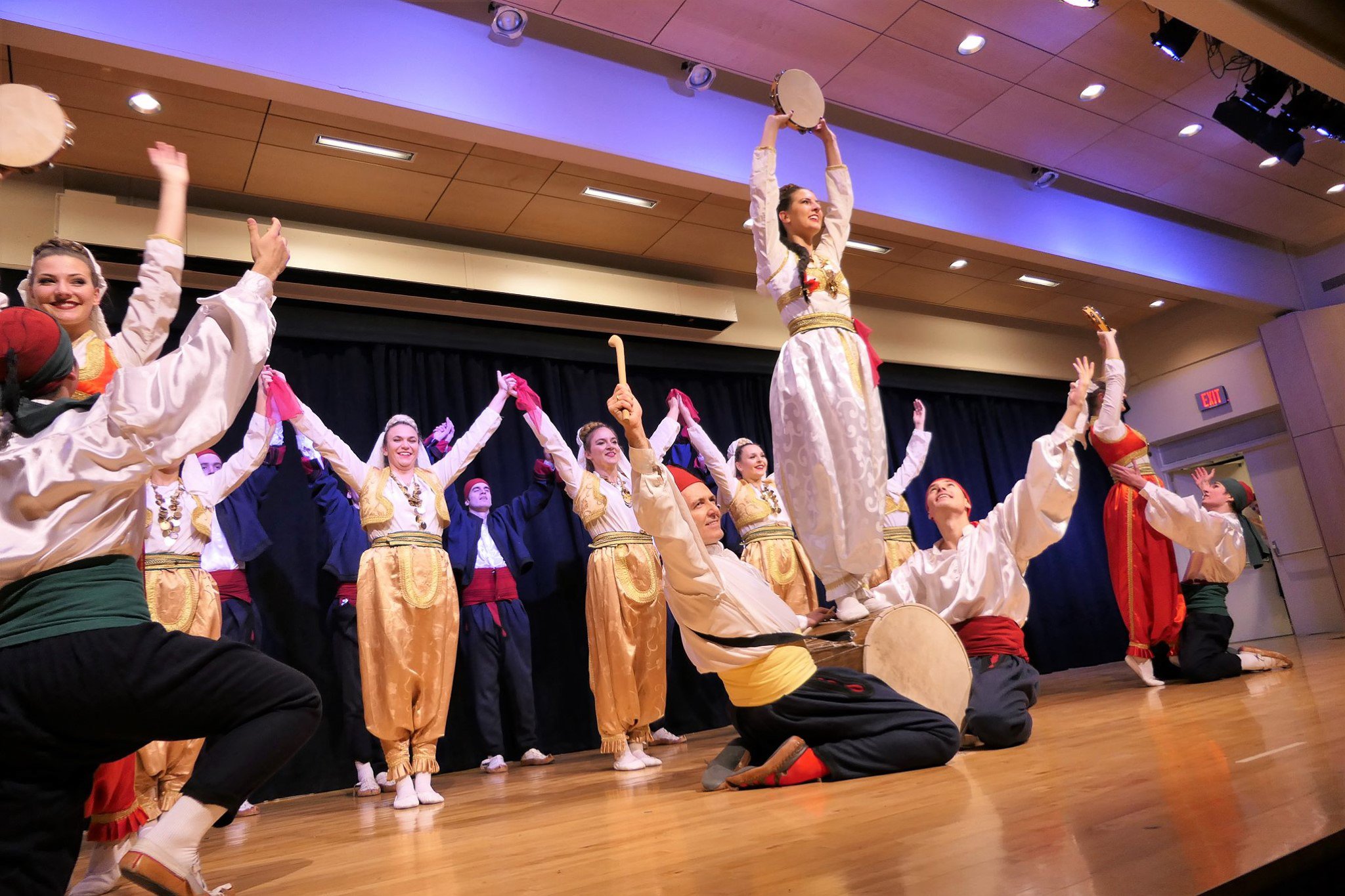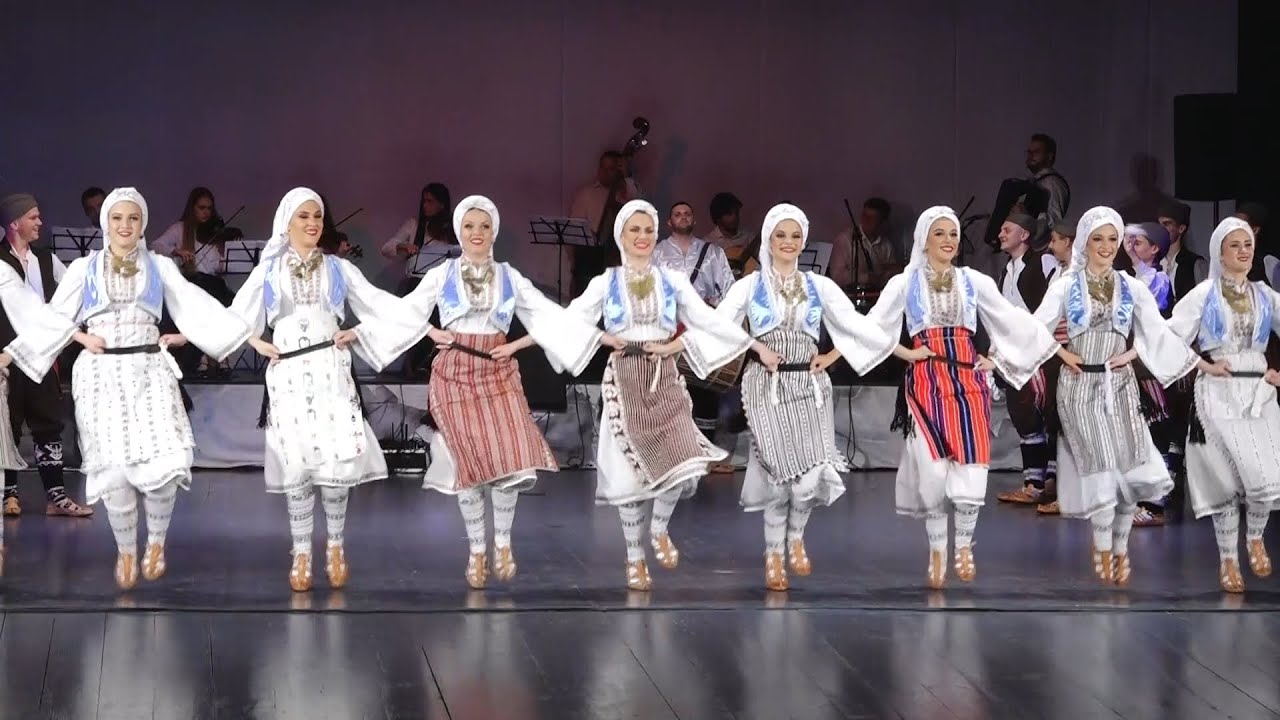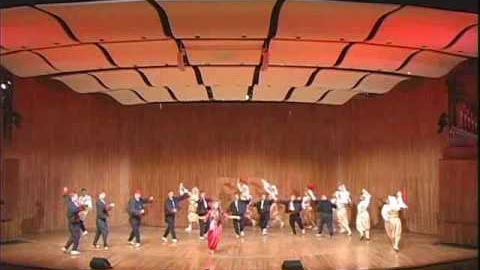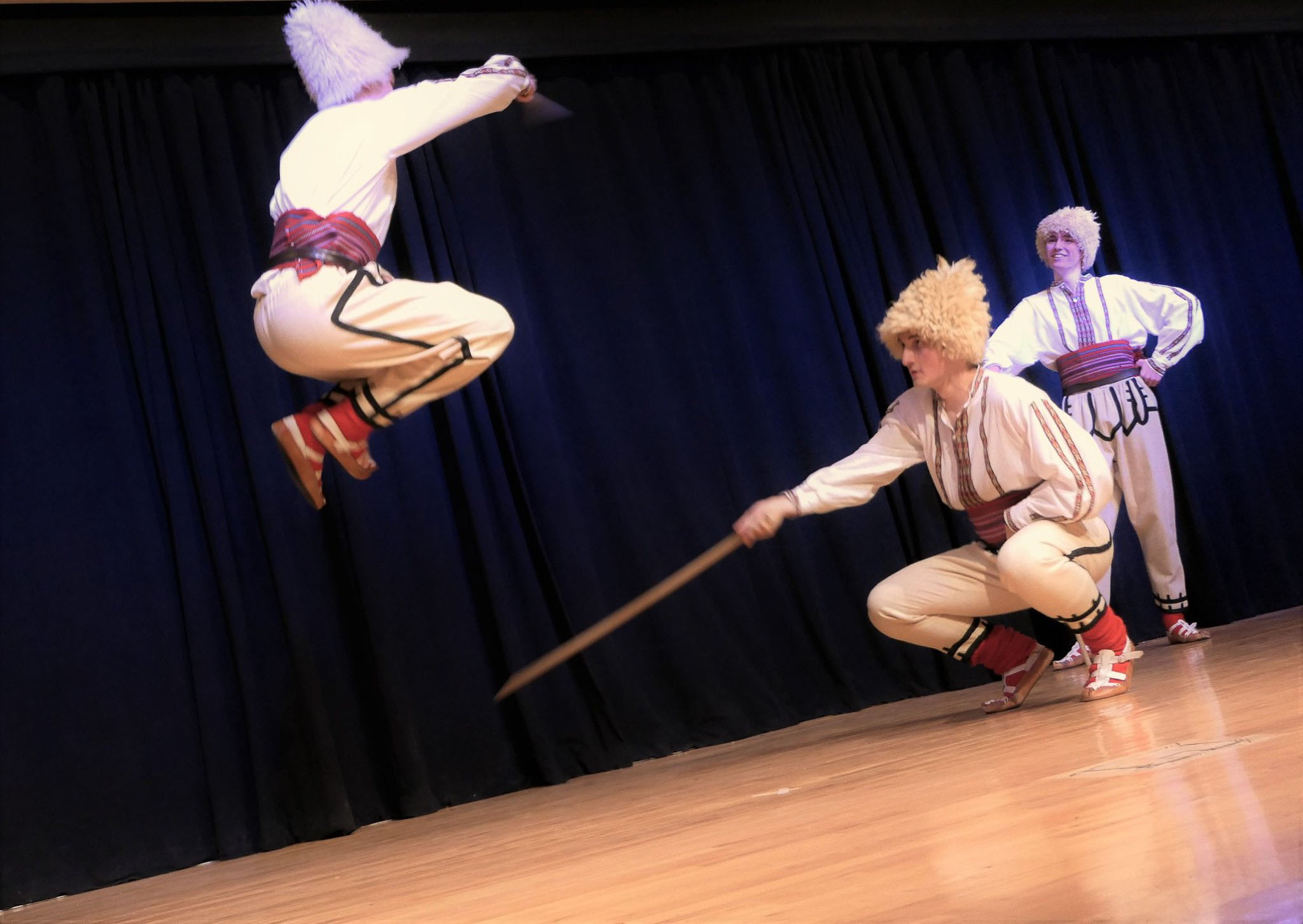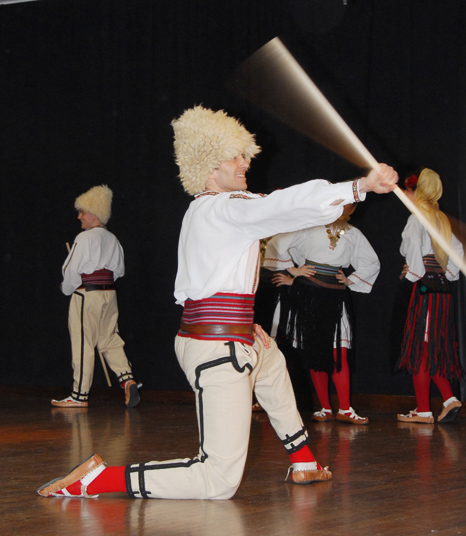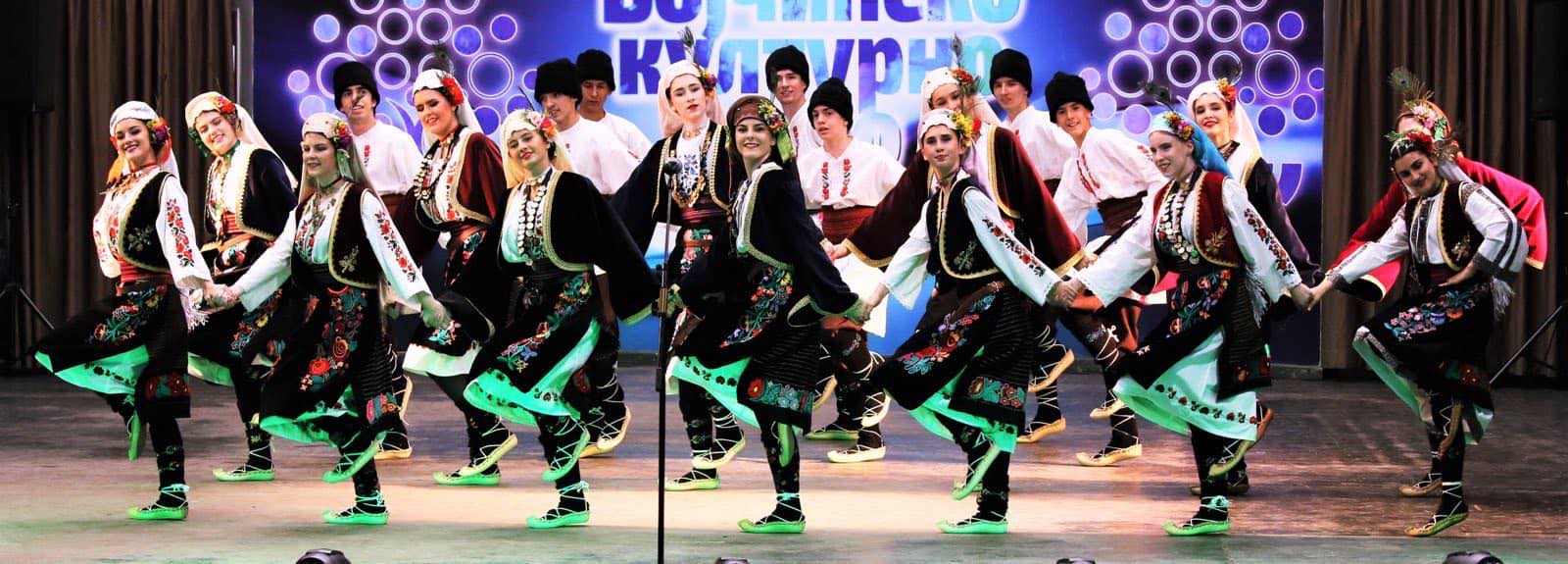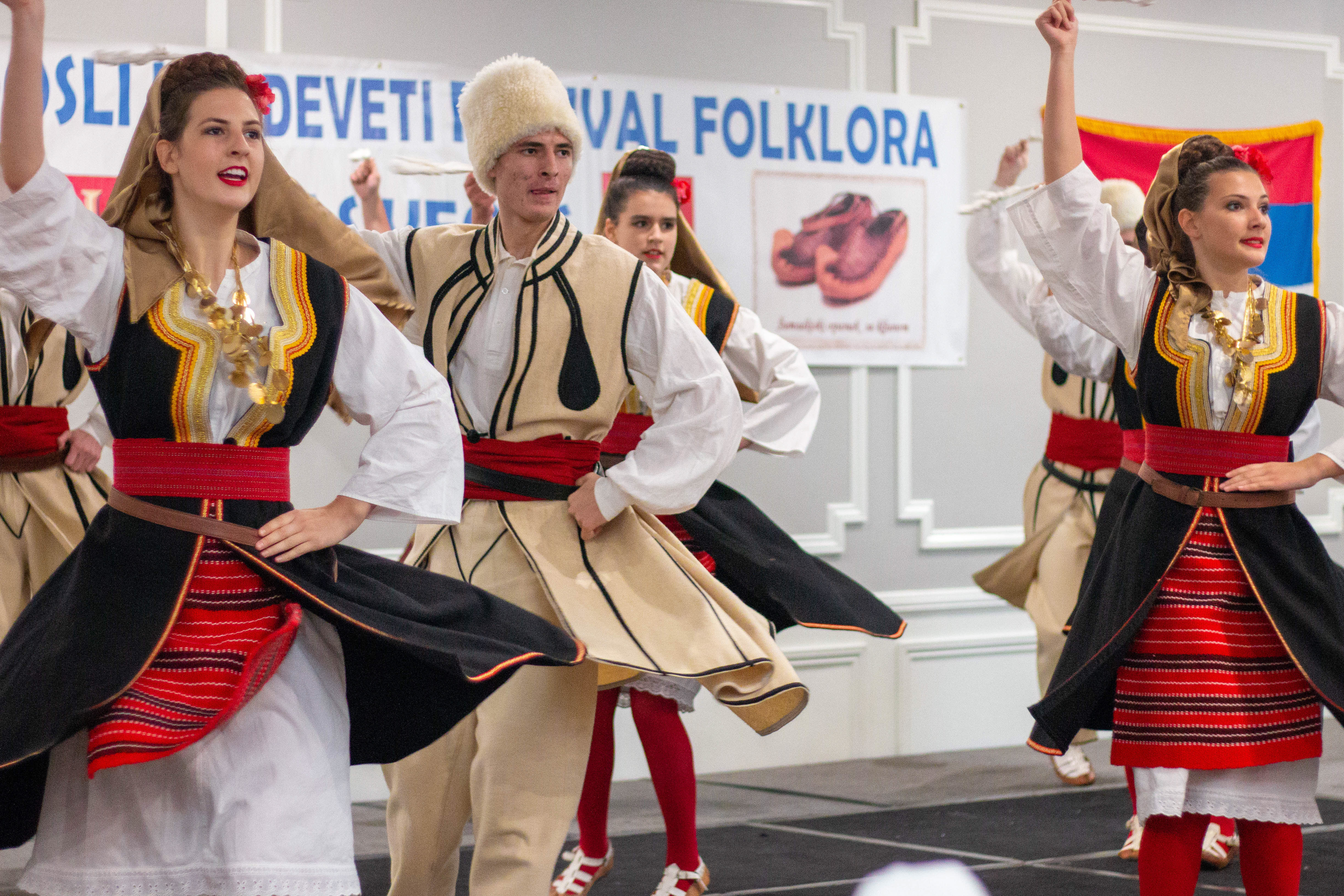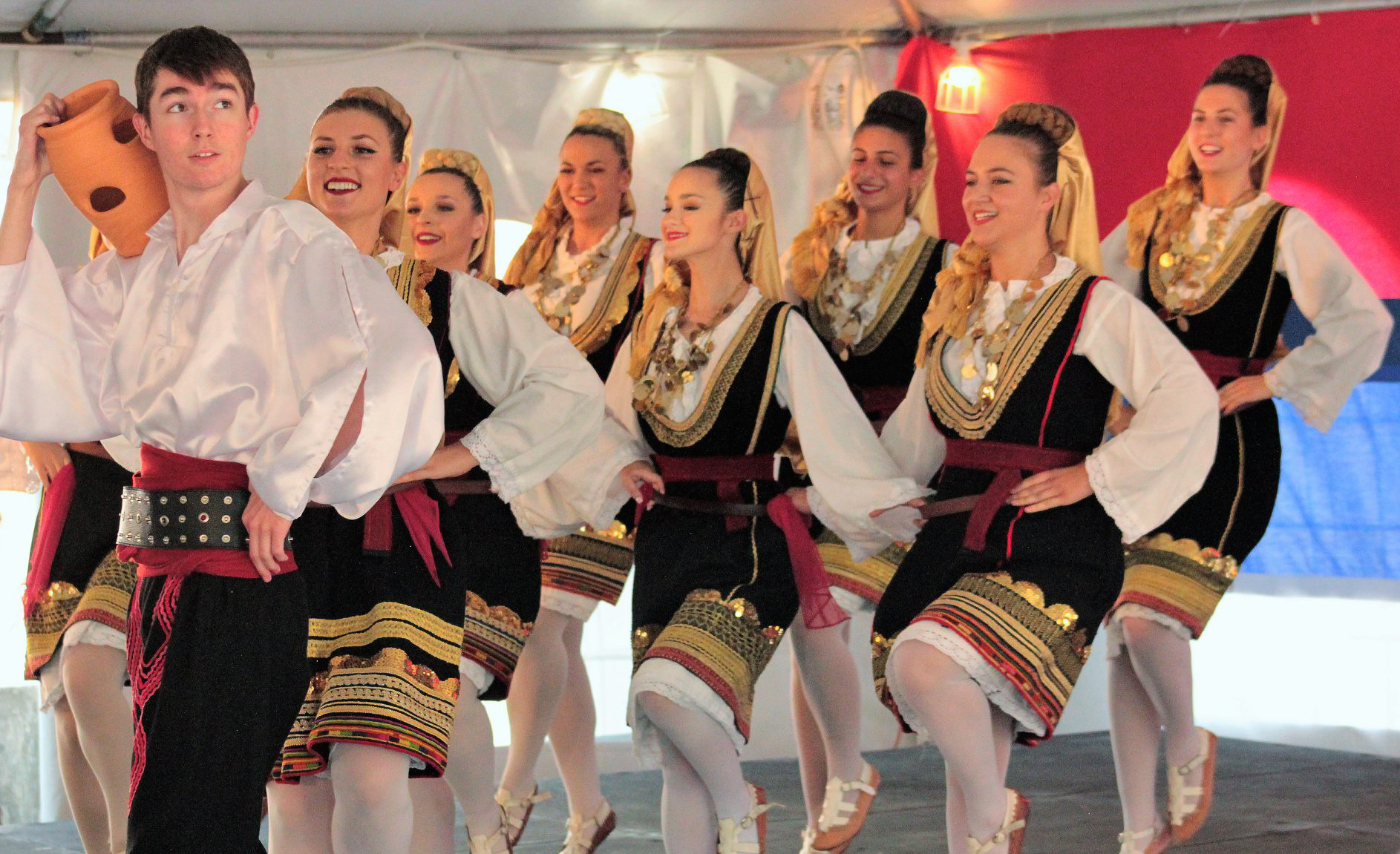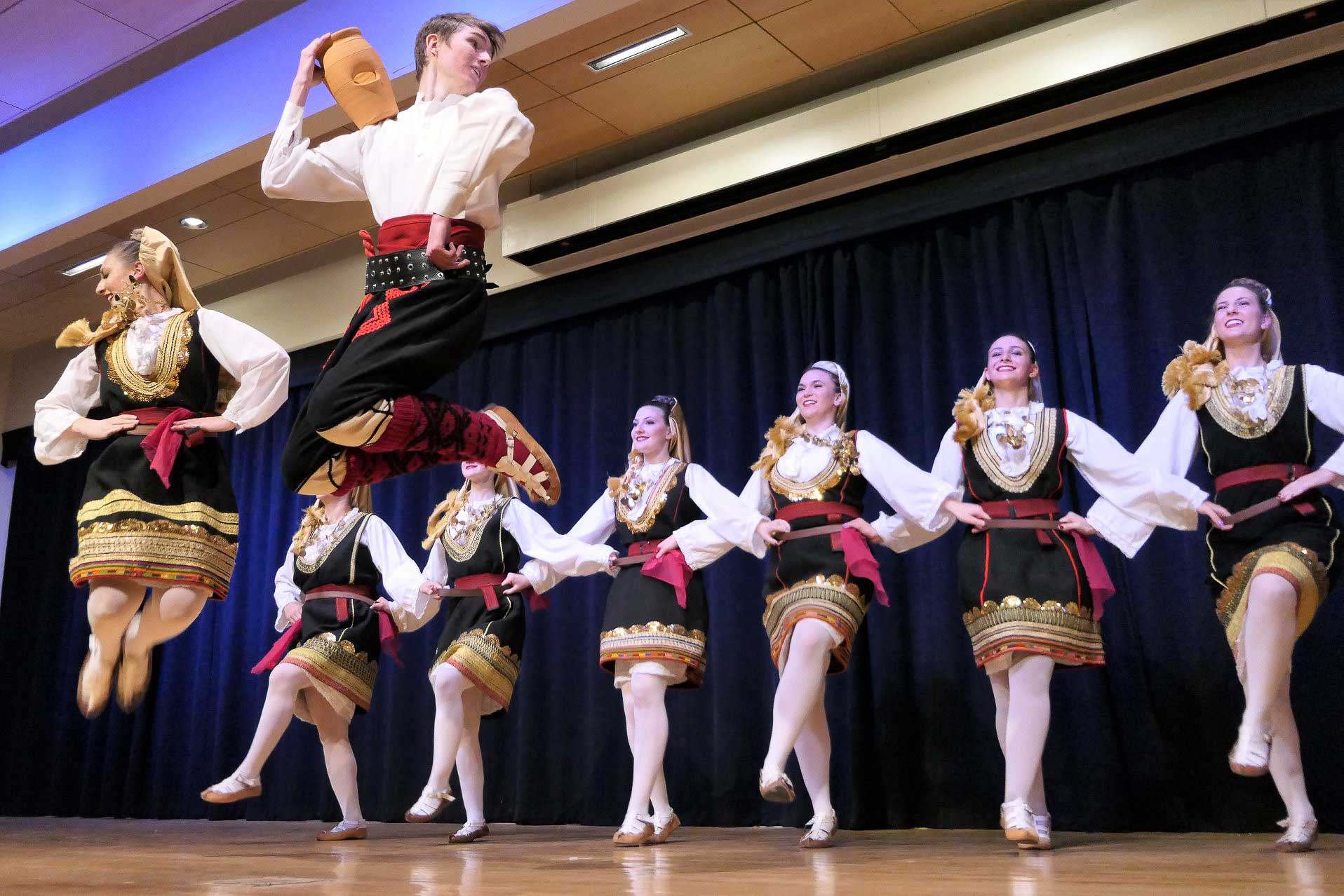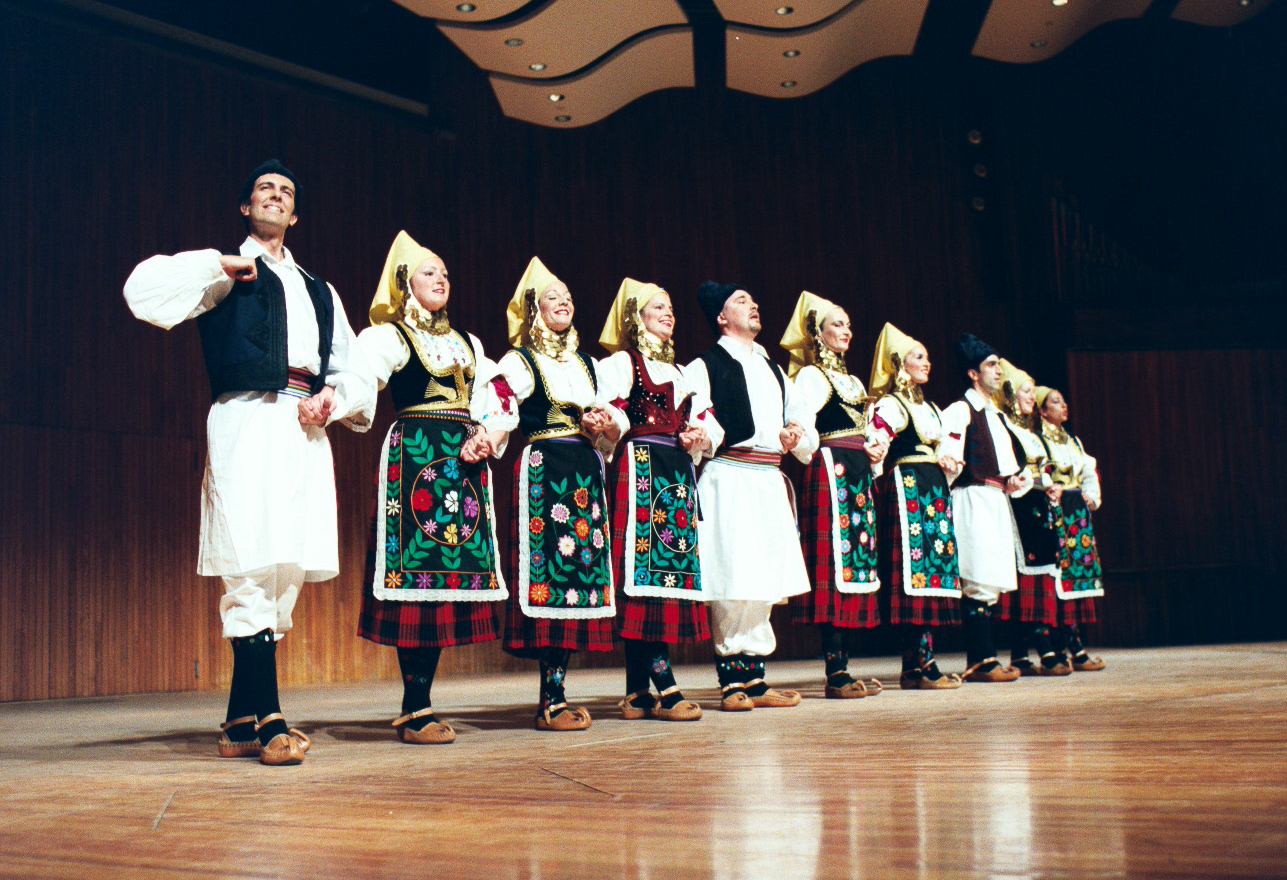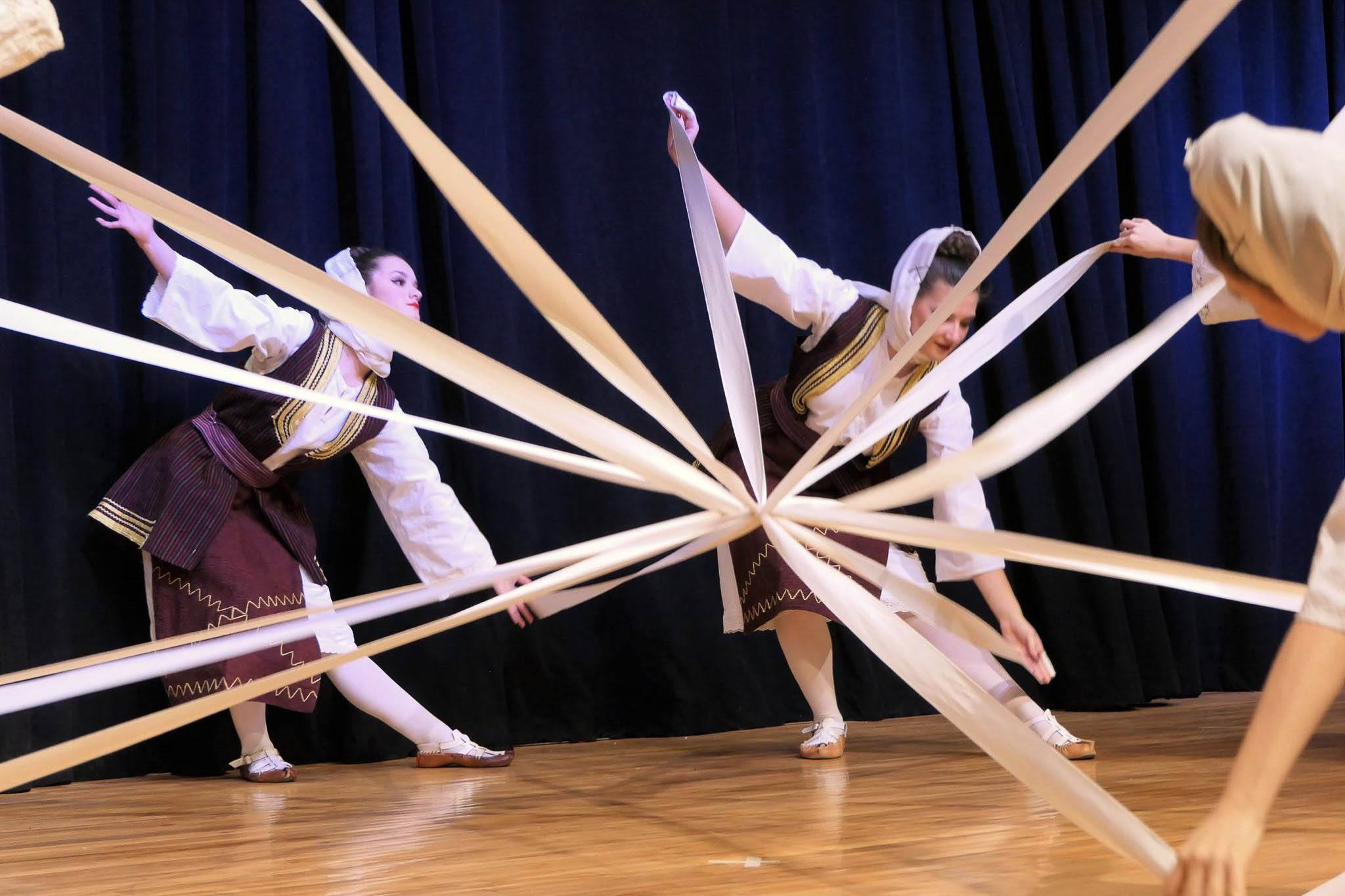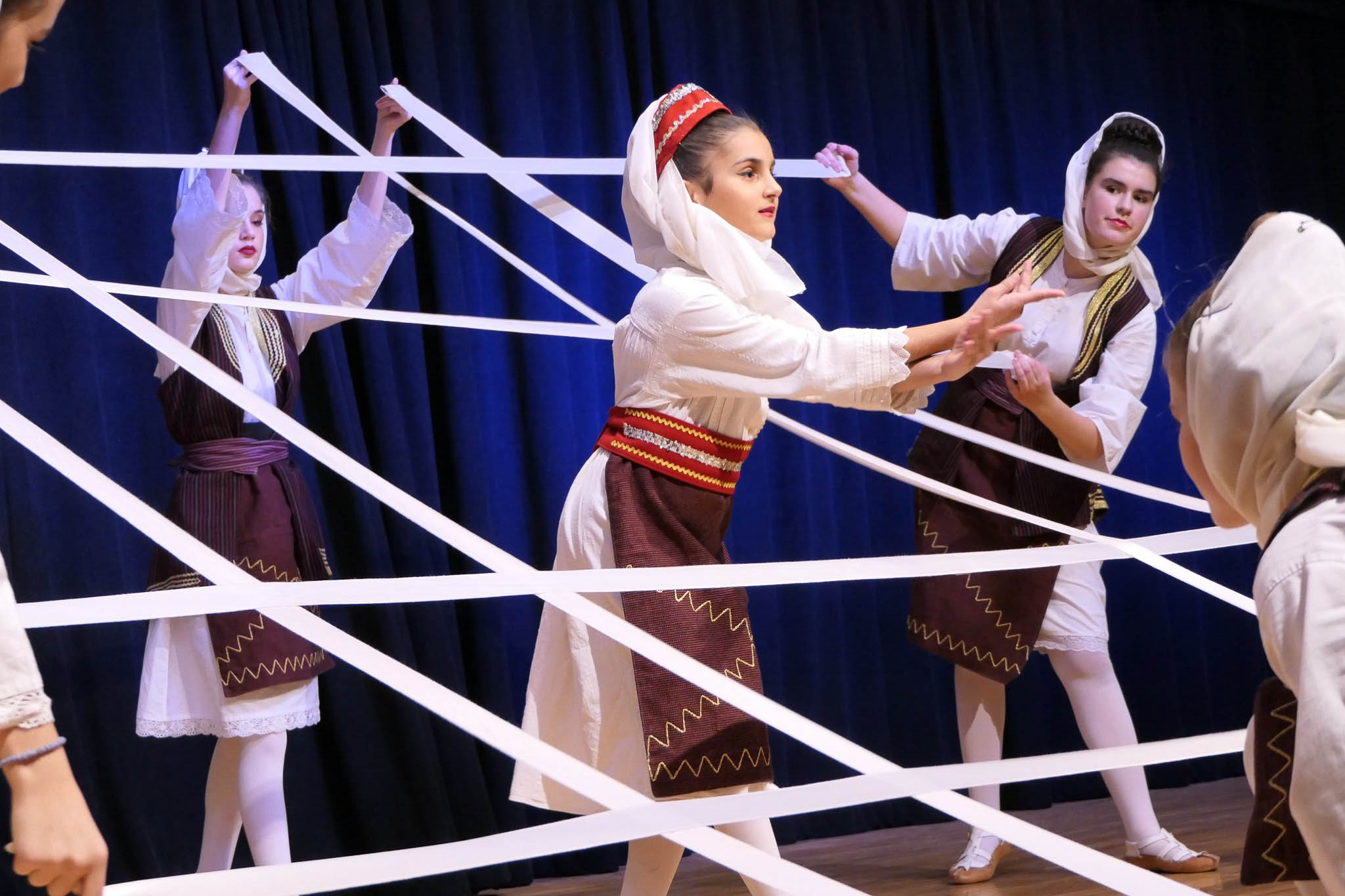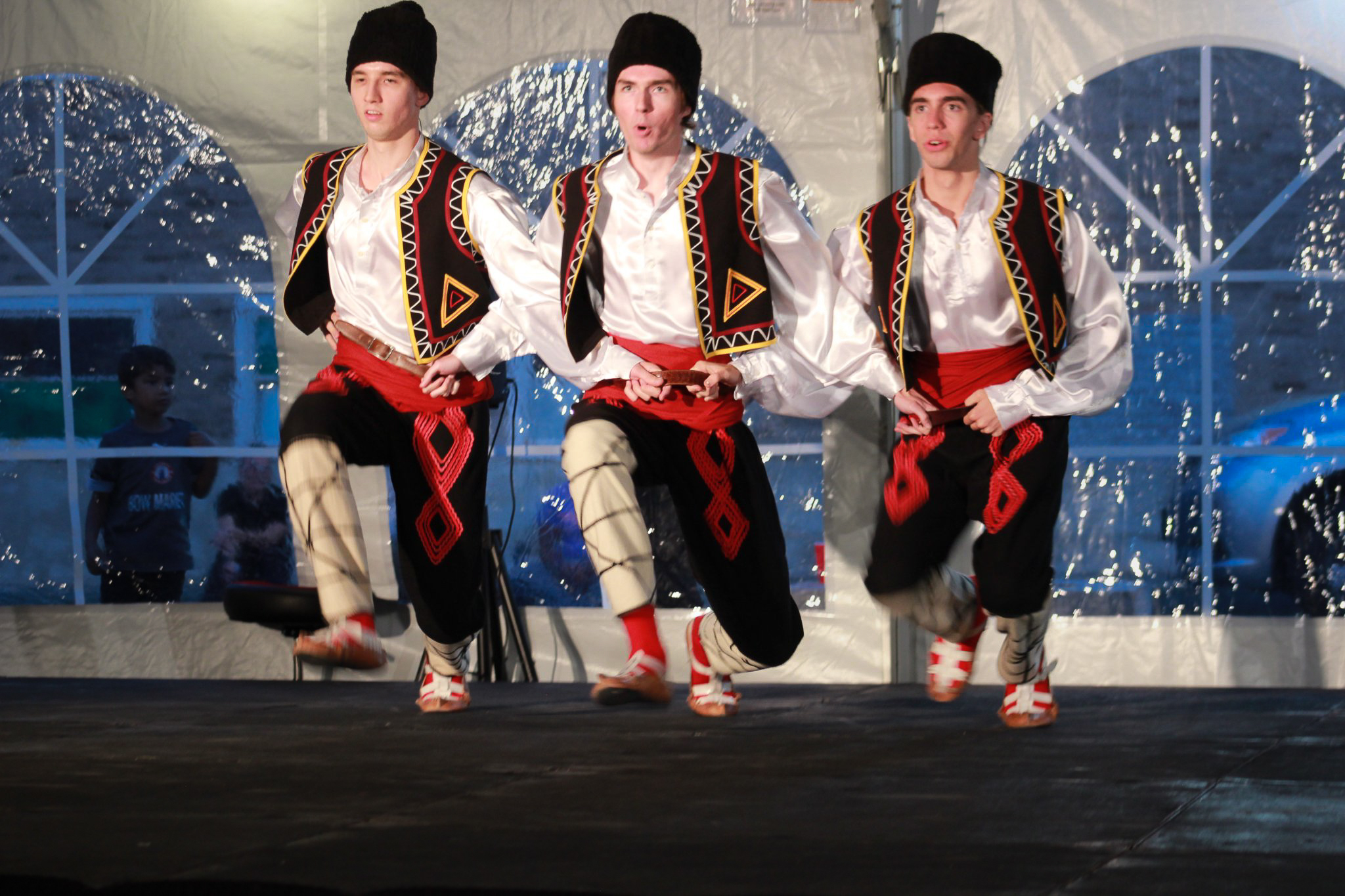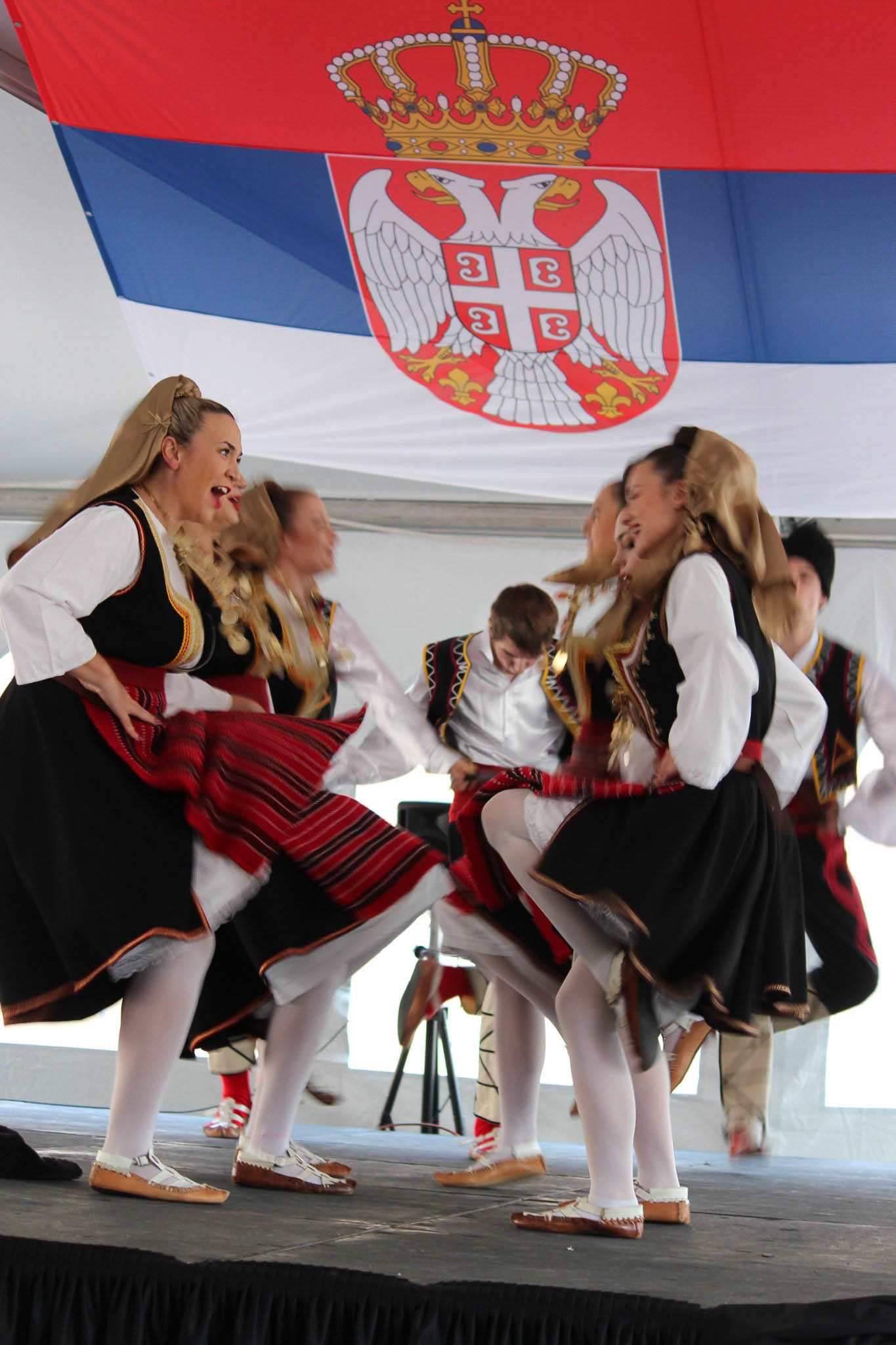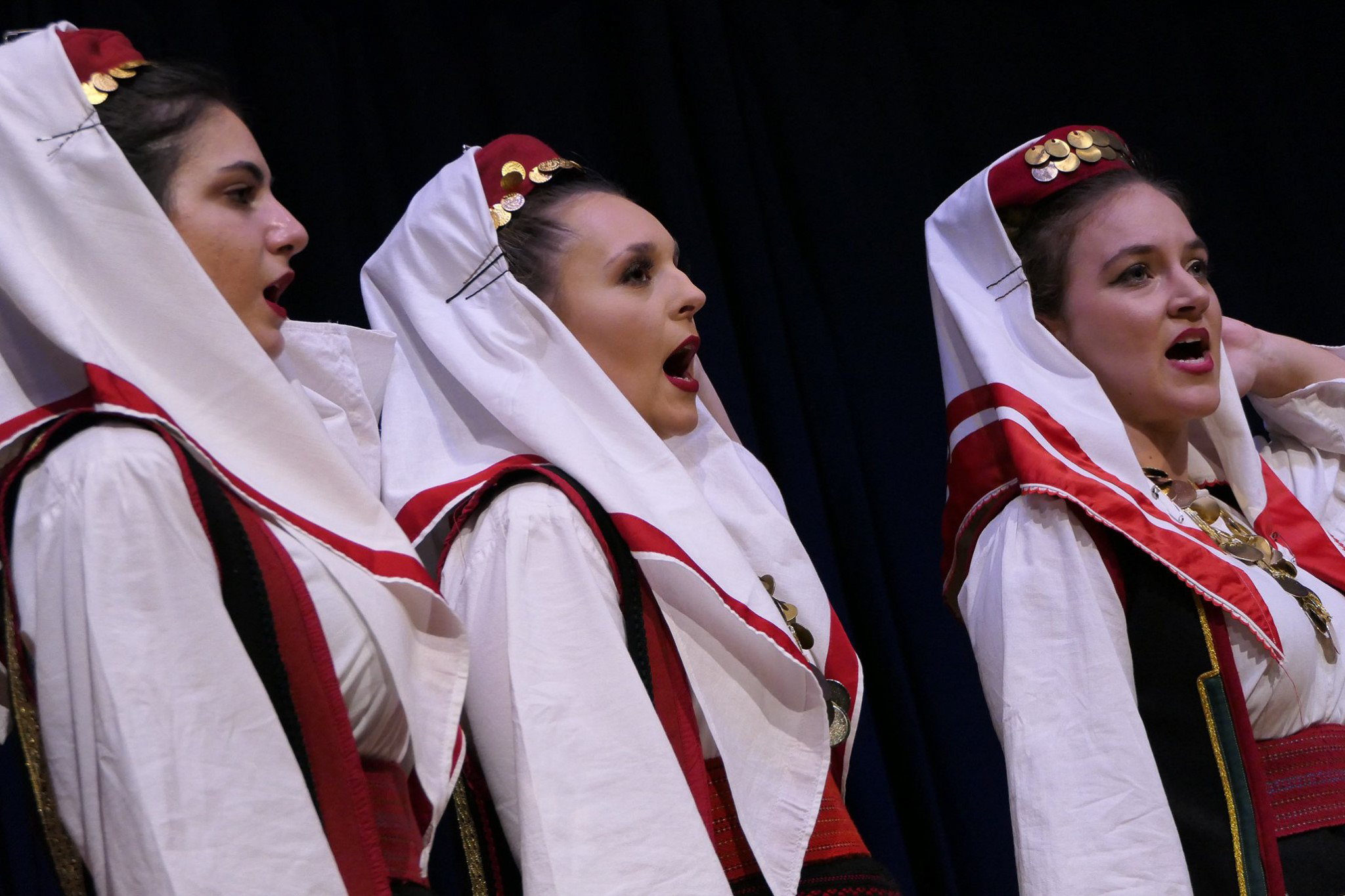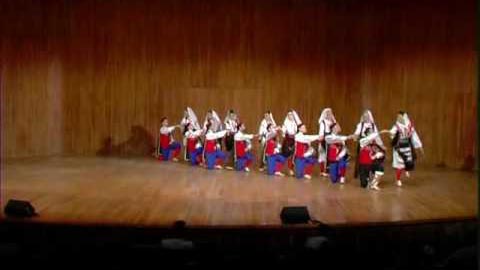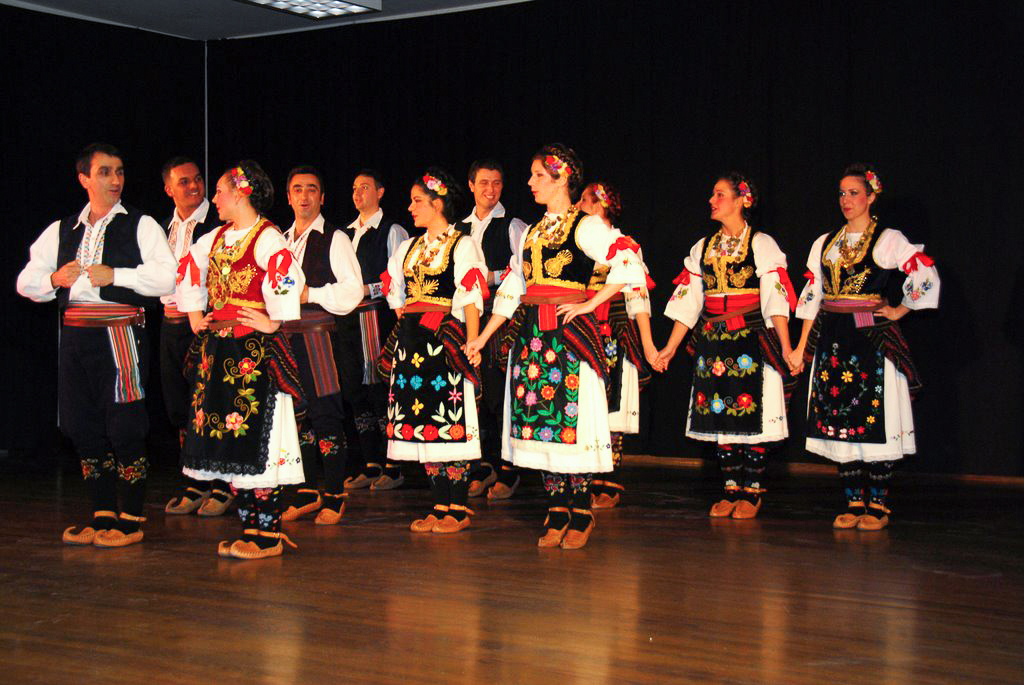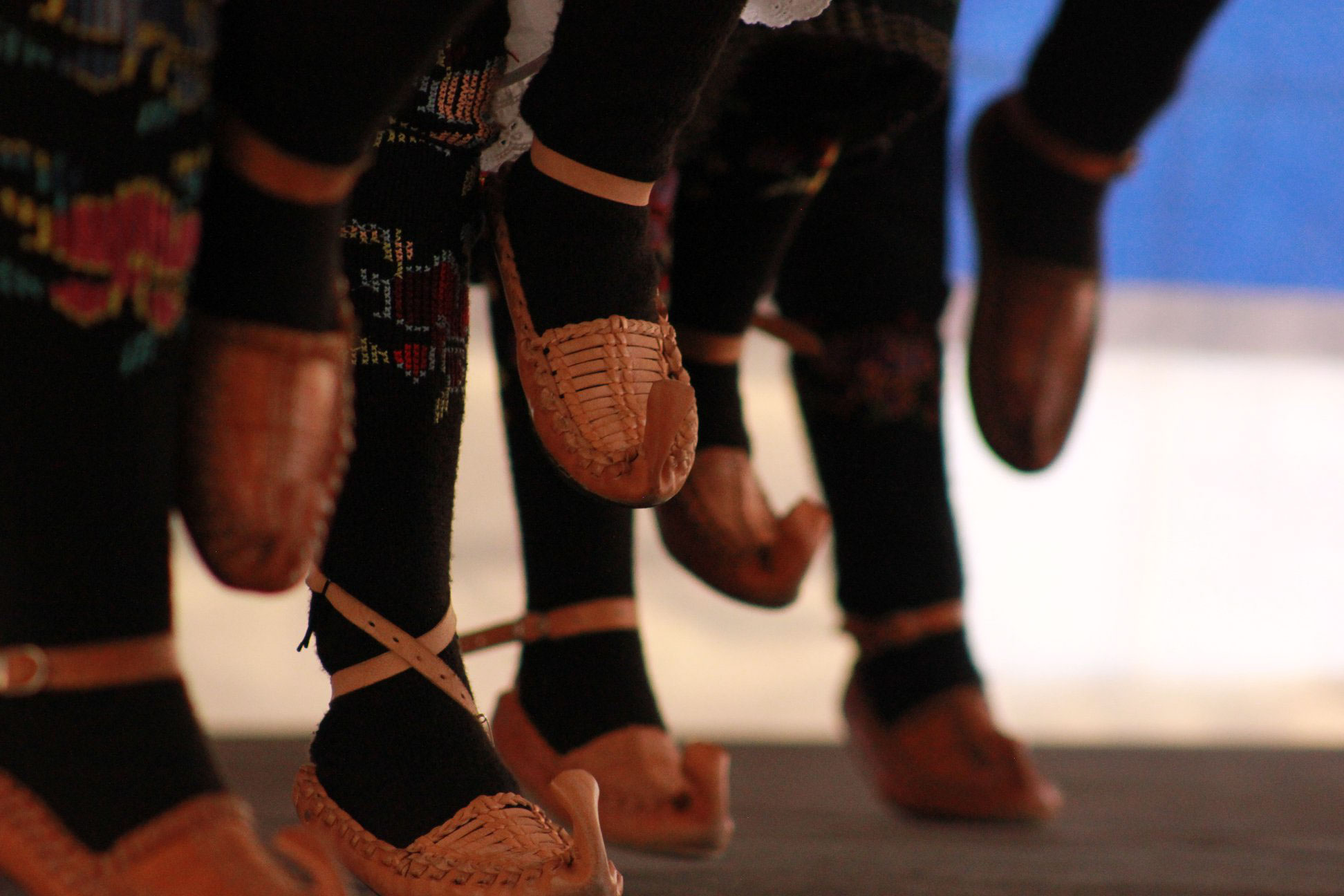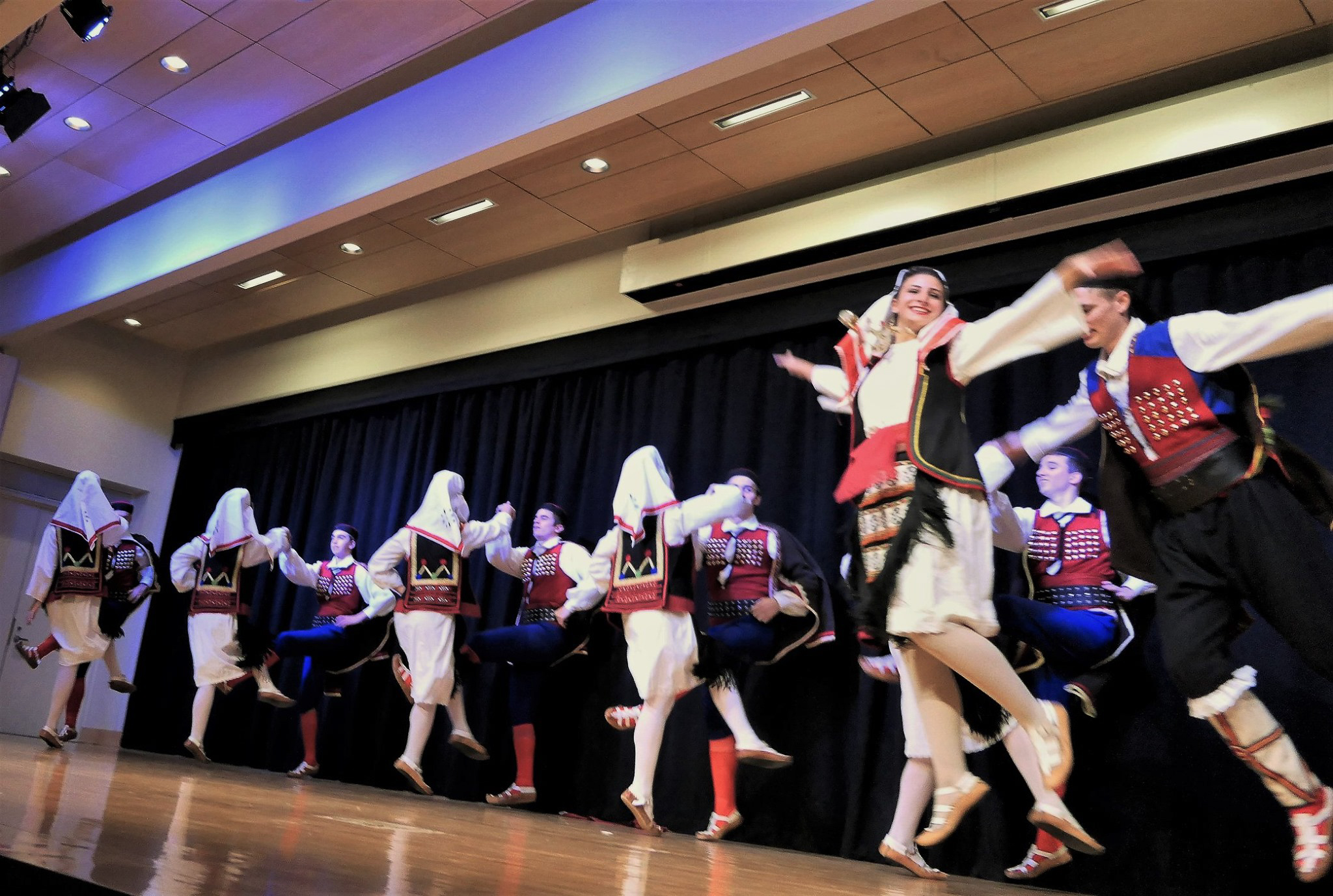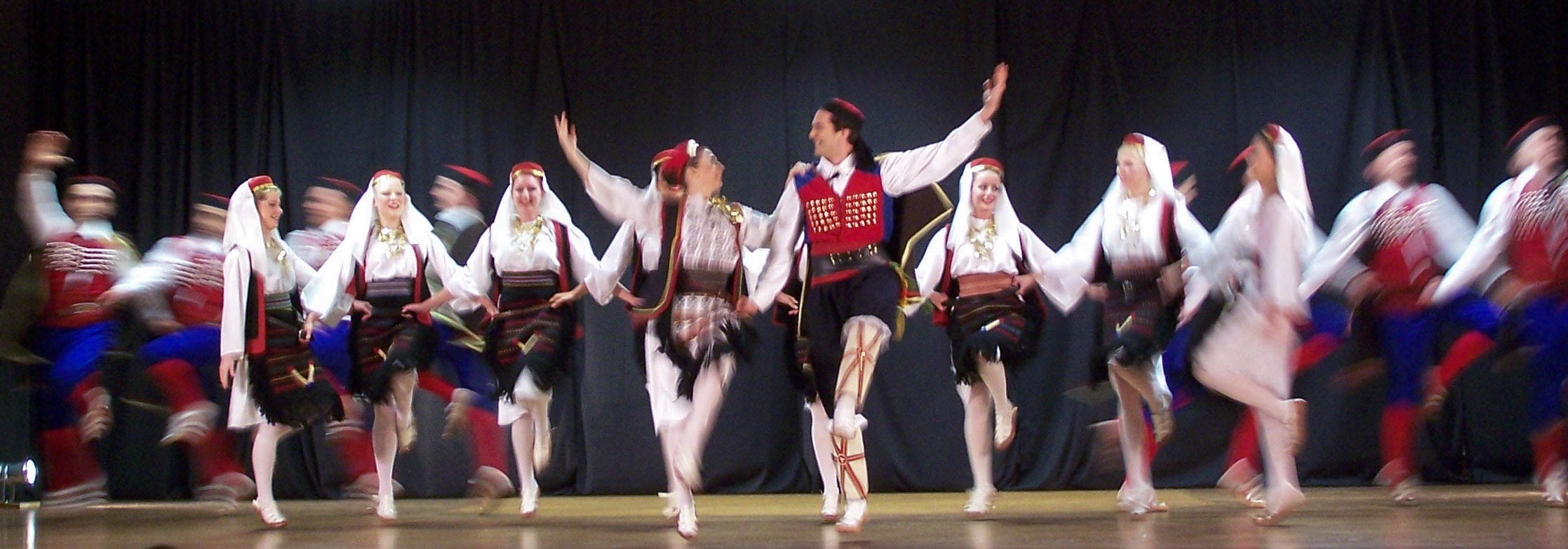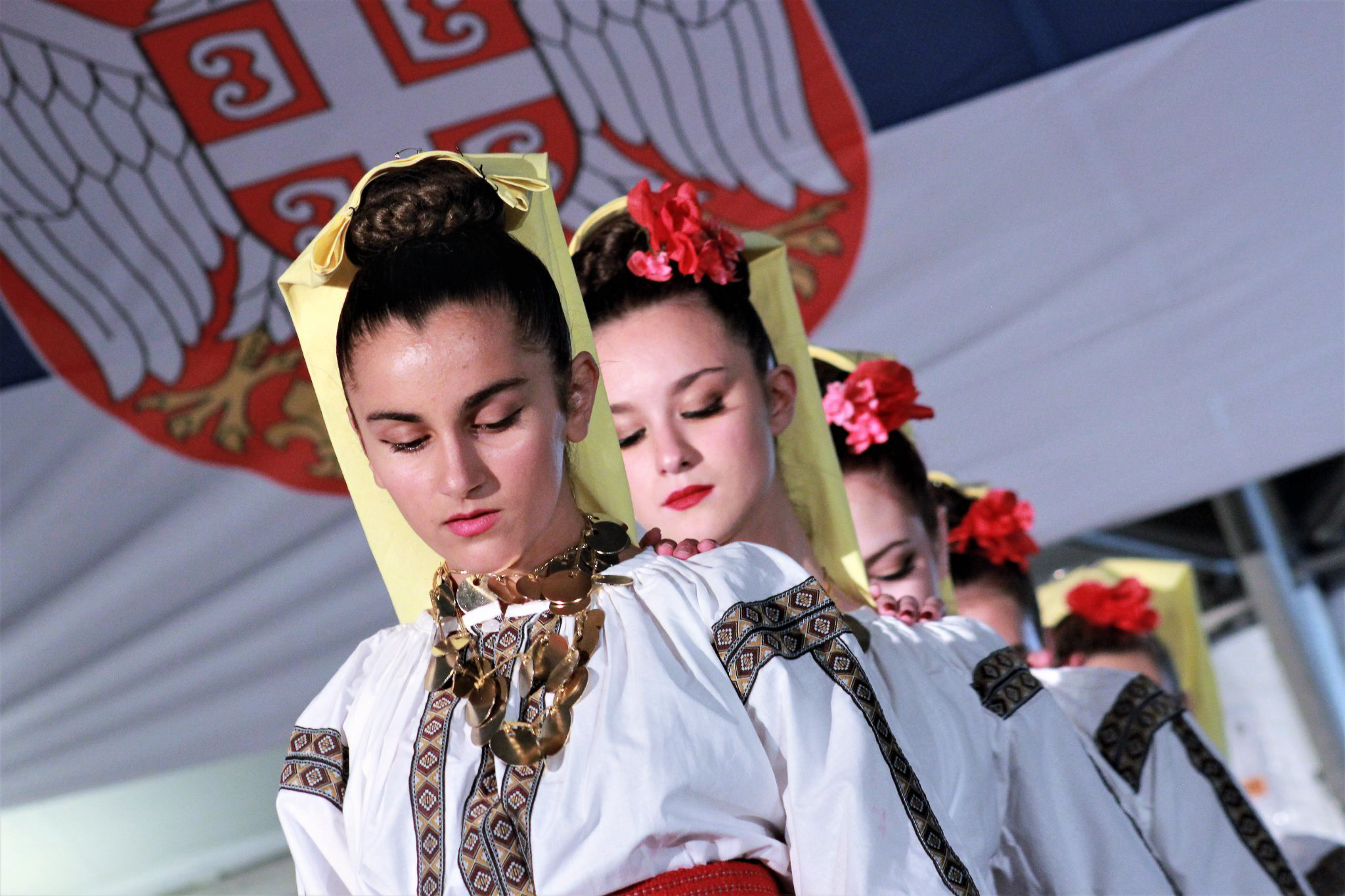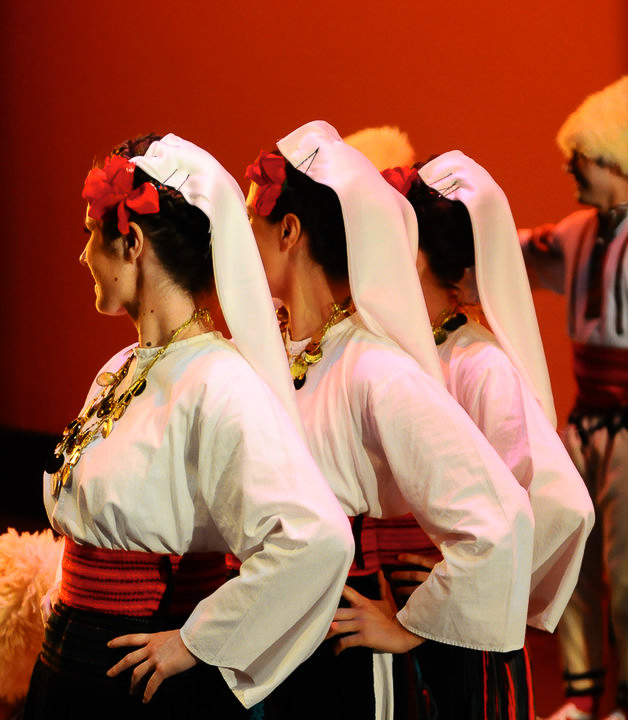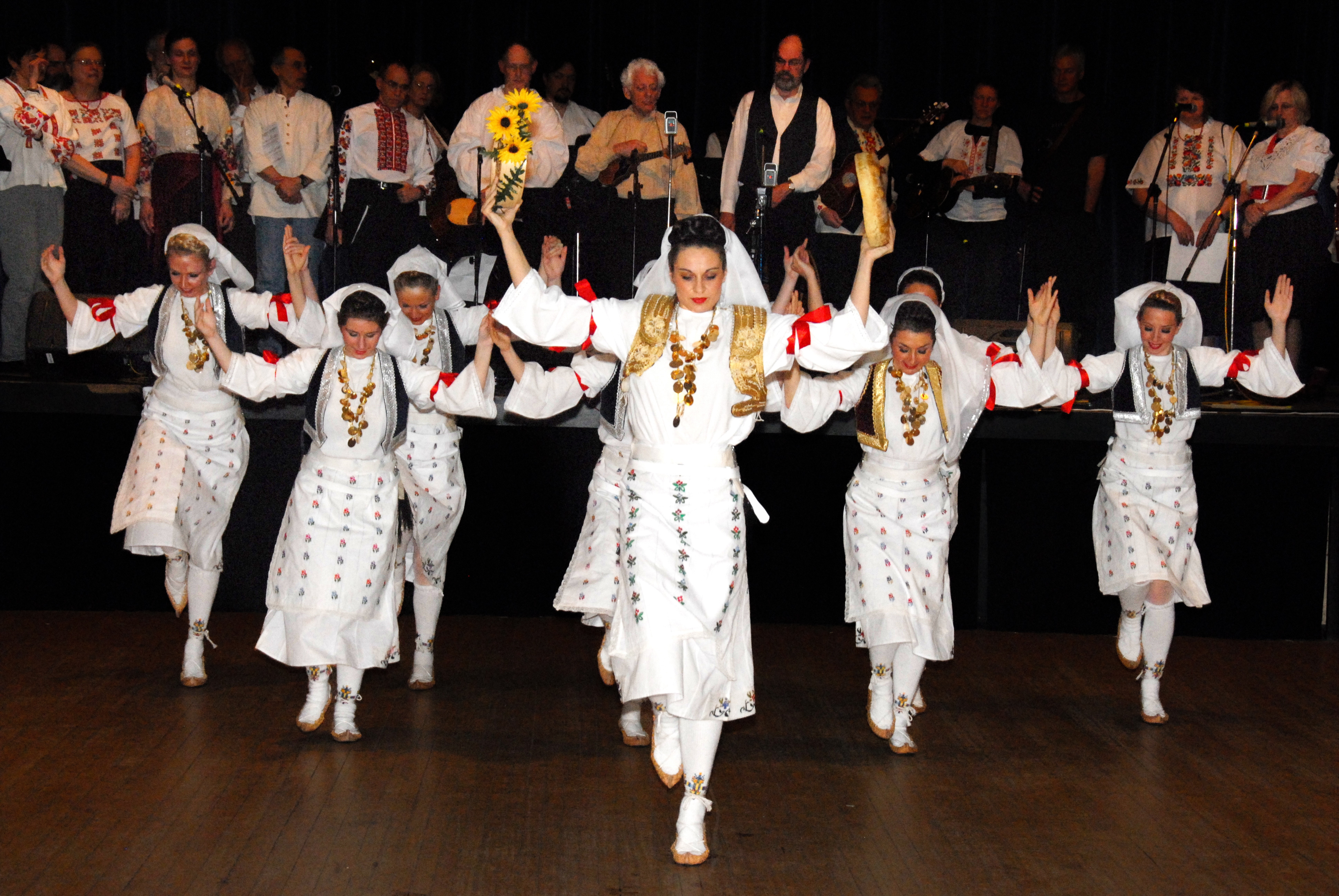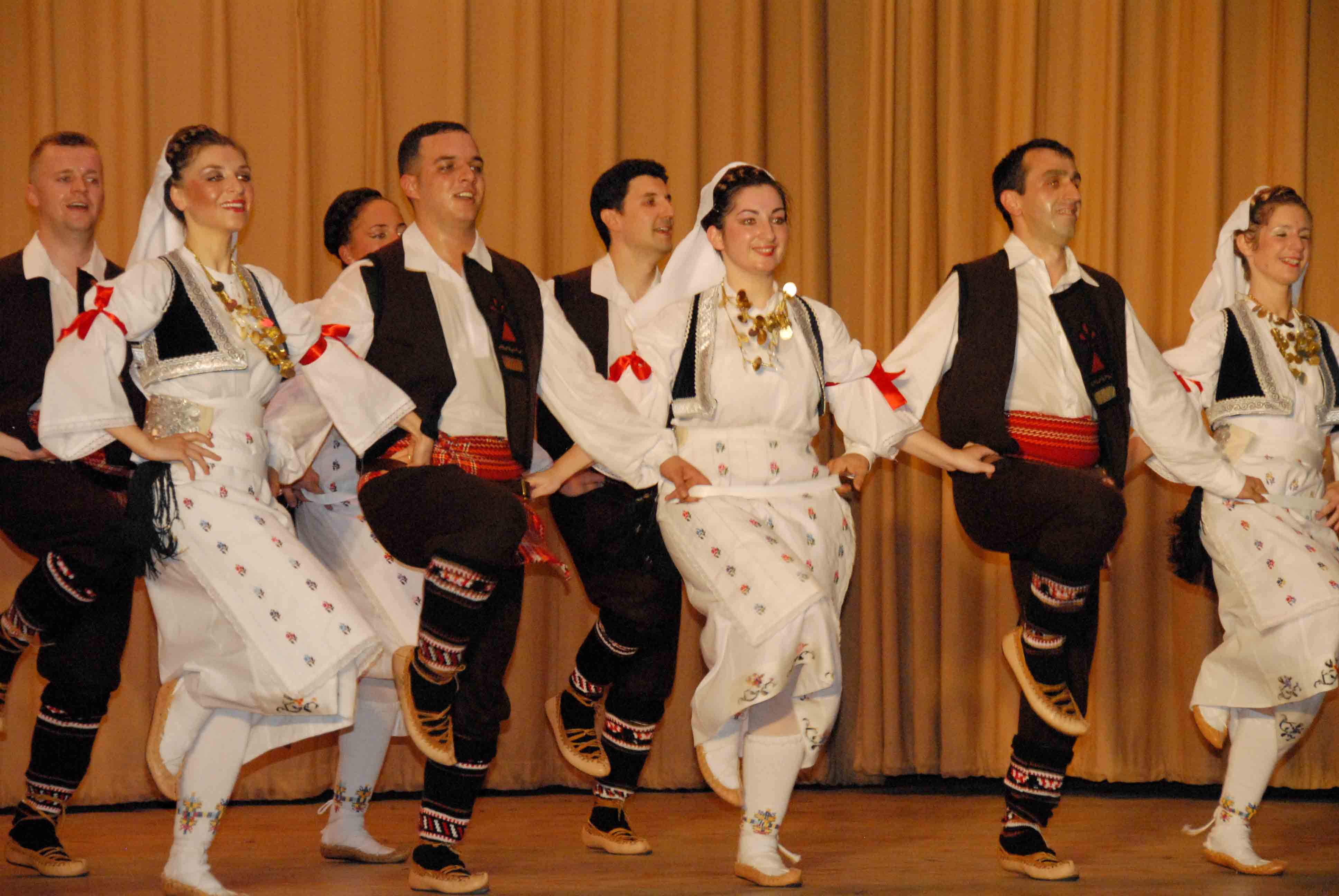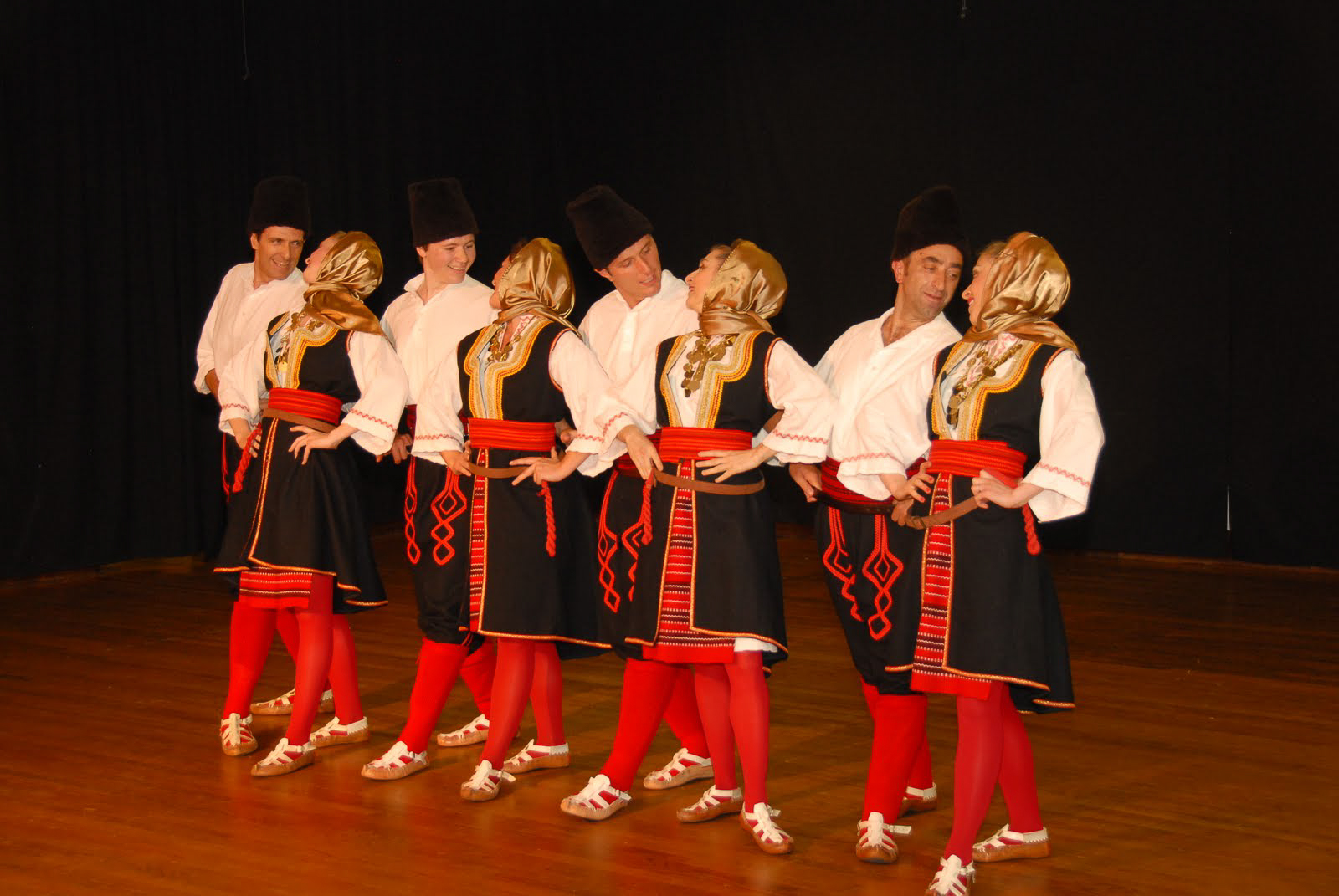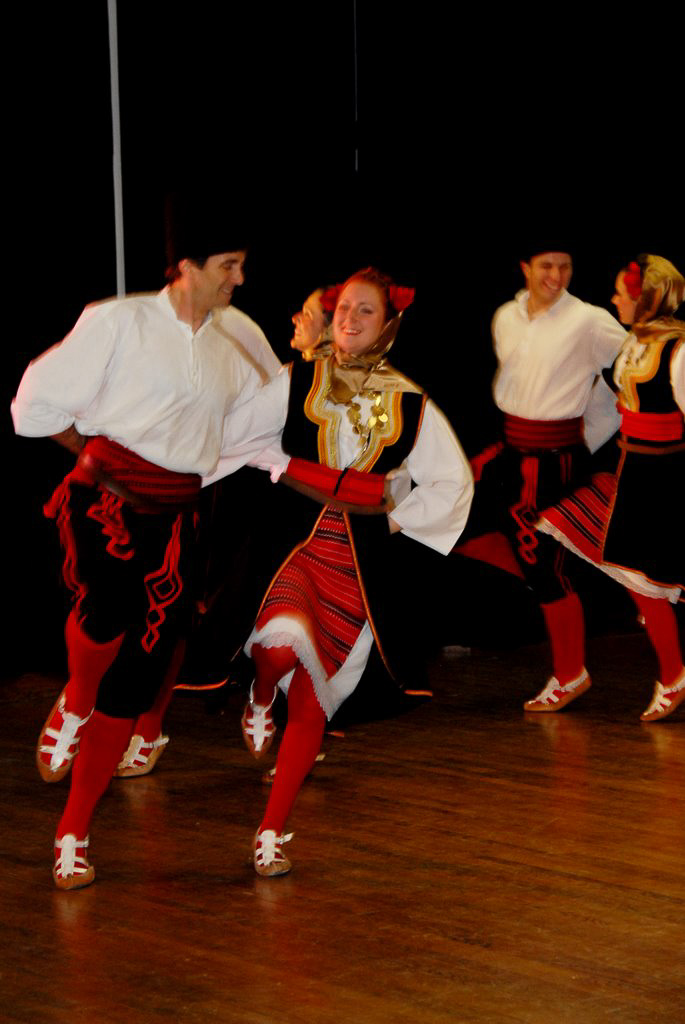The Dubrovnik, Hercegovina and Konavli regions have for centuries been home to Serbs. Lindjo is originally danced to the accompaniment of the lijerica, a three-string instrument. This jovial couple’s dance is led by the cheerful dance master, who yells out rhyming, humorous commands that often have a double meaning. He decides who will dance with whom, and dictates the changes of dance figures, encouraging the dancers to compete in improvisations.
A strong Eastern influence is reflected in this colorful yet gentle dance. Vranje is a town in southeastern Serbia under the influence of five centuries of Turkish-Ottoman rule. This choreography begins with Vranjanka, an inviting oriental-style women’s dance, followed by Teškoto, the noblemen’s dance, and a wild and high-spirited Čoček Gypsy dance. The suite builds in tempo and exuberance to culminate in an all-encompassing finale.
The village of Kobisnica lies just 7 kilometers from the Romanian border, and the influence is apparent in this lively Vlach choreography. As the women sing of lost love, the men gather in hopes of becoming the village’s newest suitor. The dance that follows continues to build in speed and difficulty, allowing both the men and women to show off their aptitude to one another.
Mândra mea cu cârpa mură
Mânca-ți-aș limba din gură
Draga mea, băla mea
Nu mai știu când ne-am afla
Și-ai doi dinți ai de sub limbă
Să uidești tu daico știrbă
Draga mea, băla mea
Nu mai știu când ne-am afla
This choreography is particularly characteristic of the Nišava river valley in eastern Serbia from which it originates. The dance features steps that reflect both the carefree life of river towns as well as the austere movements of shepherds herding livestock in the mountains to the east of the valley.
Historically, and as this fast-paced choreography’s name suggests, dances from southeastern Serbia are closely related to those from Bulgaria. That influence is apparent throughout Bugarka - in the steps, costumes, and even the musical meter itself. In the choreography, as one couple playfully fights over a pitcher of water, the other men and women of the village join in to add to the good-natured rivalry. This competition of dancing competency leads to an exhilarating display of physicality and coordination.
The valley of the river Kolubara is known for its fertile lands and hard-working people, whose zest for life is evident in their customs and celebrations. After gathering from their harvests, young men venture into the village center in hopes of meeting the elaborately dressed young women. As the music begins, the men and women join in a display of fast-paced, high-spirited footwork, which continues to build in tempo and excitement.
This all-women's dance is inspired by a traditional song. Originating from Ohrid, Macedonia, it takes place around the village well, where the women of the community gather to wash their linen together. A band of revelers passes by, and a handsome young man catches the eye of Biljana, one of the women washing her linen. She falls in love with this man only to find out that she is witnessing the procession to his wedding.
To kick off this spirited choreography from southeastern Serbia is “trojno”, a brief but energetic display of athleticism and coordination by a trio. What follows is a series of back-and-forth steps between men and women, called “nadigravanje”, in which each attempts to outdo the other through intricate and demanding sequences.
During the Ottoman occupation of the Balkans, Serbian villagers in the Hercegovina region were forbidden from playing music and singing national songs. However, they found ways to maintain the music and dance of their heritage by ingeniously dancing so-called mute dances – accompanied only by the rhythm of their steps accentuated by the jingling of coins worn as part of the women’s costumes. The dance celebrates the spirit, resilience and persistence of the Serbs from the town of Glamoč.
Dances from the Šumadija region in central Serbia are well known for their lively, intricate steps, with tricky intertwining, hops and vibrations which exhibit a true finesse in folkloric style. A medley of popular dances such as Bela Rada (White Daisy), Moravac, and Čačak are performed by men and women adorned in costumes rich in texture and color.
This choreography is the finale of the comic opera Ero (an Everyman) From Beyond this World, inspired by famous folk music motifs and dances of the former Yugoslavia. Mića is a wealthy young man who takes his mother’s advice and disguises himself in the clothing of a poor man in an attempt to find his true love – the one who would not be interested in his wealth. “Poor” Mića falls in love with Djula, the daughter of a wealthy local baker, much to the dismay of her father. Djula returns his affections, all is revealed, and the finale performed by Grachanitsa is the happy celebration of the couple’s wedding.
Serbian dances and songs from Kosovo and Metohija are among the most beautiful and graceful in all of Serbia. Wedding celebrations in the town of Gnjilane always began with the mother-in-law’s welcoming dance. She holds bread (symbolizing fertility) and a decorated sieve (symbolizing wealth) and dances in expression of love for the newlyweds. The festivities continue with the young women’s guest dance, is followed by the bride’s wedding song and the men’s dance, and culminates in an all-encompassing and exuberant Čačak from Gnjilane.
The Nišava River has its source just beyond the Bulgarian border, and in its course towards the river Morava, it flows through a region of eastern Serbia known for its colorful costumes and lively dance. Dances such as the Šestorka, Rumena and Lilke are danced at village festivals, such as the one held on St. Tryphon's day. This Patron Saint of vineyards is commemorated by the first trimming of the grape vines, in anticipation of a new growing season and the future wine it will yield.



